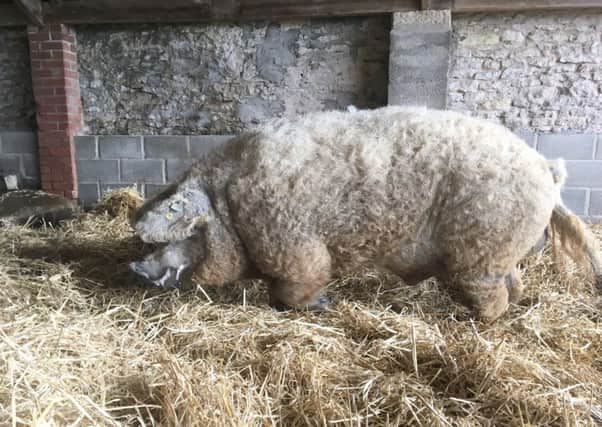Julian Norton: Treating hairy pigs from a distance


Mangalitza pigs originate from Hungary and from a cross between a wild boar and a breed of pig from Serbia. Twenty years ago there were just 200 of these extraordinary pigs left in Eastern Europe, but a few enthusiasts have taken up their cause. The meat they produce is marbled, which means fat is ingrained throughout it. This gives a wonderful, rich flavour, more akin to beef than the ultra-lean, often insipid, pork that is common.
The fat, apparently, has special, life-enhancing properties as it contains relatively high levels of cholesterol-busting monounsaturated fats and omega fatty acids. Mangalitza pork has become popular in swanky restaurants and I can confirm that it tastes delicious.
Advertisement
Hide AdAdvertisement
Hide AdBut it is not the omega fatty acids in the meat that make heads turn. At first sight, these pigs look just like sheep. Their thick, curly hair looks like wool. So a herd of them, roaming in a paddock, looks more like a flock.
My presence was required to take DNA samples from the pigs, to confirm their identities. Hal, the boar, was destined to father a whole generation of piglets on Lisa’s farm, so his genetic provenance was important, given the small gene pool of the breed. This was why these two had come from Holland - to expand the gene pool and prevent in-breeding.
They arrived in the most luxurious animal transporter I’ve seen; deep in shavings, immaculately clean and with air conditioning. The haulier lowered the tailgate, and they waddled down the ramp to make their new home near Helmsley. Once Hal recovered from the journey he would be fathering piglets and expanding the herd.
Pig work in our practice has changed considerably over the years. Most large units are now looked after by specialist pig vets, whose role is more to oversee the herd’s health than to treat the individual. Our porcine patients however are typically on small farms and are often rare breeds, which results in a very different type of work. Indeed, we mostly treat the individual, which brings with it new challenges, especially when those individuals aren’t so keen on being treated.
Advertisement
Hide AdAdvertisement
Hide AdThis was the case with Monica, who was the first of Lisa’s Mangalitza pigs I encountered. She’d recently farrowed and had stopped eating, even refusing melon, her favourite, so clearly something was amiss. Unfortunately, she was also ferociously protective of her babies and had big, sharp tusks. I had zero chance of getting close enough to perform a proper examination, so I decided to inject the bad tempered sow using a lance, which would put some distance between me and her teeth.
As I released the plunger, Monica leapt up and charged, fully intent on protecting her babies from the intruder in her pig sty. Instinctively I let out a scream, of girl-like proportions, straight at the cameras, who had come along to film the amazing hairy pig. Despite my protestations, I knew that a vet screaming and running away from a charging Mangalitza would make the edit.
The Yorkshire Vet continues on Channel 5 this Tuesday at 8pm.